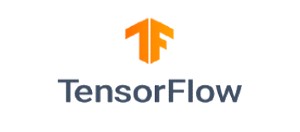
TensorFlow
Satellite IoT (SatIoT) operates at the crossroads of massive data generation and cutting-edge technological innovation. As satellites produce vast streams of data—from telemetry and sensor readings to high-resolution imagery—extracting meaningful insights quickly and accurately is a challenge that demands advanced tools. Enter TensorFlow, Google’s open-source machine learning framework, which has become a go-to platform for building scalable AI solutions in the SatIoT domain.
With its flexibility, powerful features, and vast ecosystem, TensorFlow empowers SatIoT developers to tackle complex challenges such as real-time anomaly detection, predictive maintenance, and satellite image analysis.
Why TensorFlow is Essential for SatIoT Applications
TensorFlow offers a robust framework for developing, training, and deploying machine learning models at scale. Its ability to handle diverse datasets and support both edge and cloud computing makes it perfectly suited for the dynamic requirements of SatIoT, where systems often need to process data in real-time across distributed networks.
For SatIoT, TensorFlow enables:
- Scalable AI model development to handle enormous volumes of satellite data.
- Deployment flexibility, supporting edge, cloud, and on-premise environments.
- Integration with advanced AI techniques, such as deep learning and neural networks.
Key Features of TensorFlow for SatIoT Applications
- Scalable for Big Data Workloads
TensorFlow is designed to handle large datasets efficiently. For SatIoT applications, this means processing massive volumes of telemetry, sensor, and geospatial data without bottlenecks. - Support for Advanced AI Architectures
TensorFlow excels at building and training complex neural networks, including convolutional neural networks (CNNs) for image analysis and recurrent neural networks (RNNs) for time-series forecasting. These architectures are invaluable for SatIoT tasks such as satellite image classification and weather prediction. - Edge-to-Cloud Deployment
TensorFlow Lite allows developers to deploy AI models on edge devices, enabling real-time analytics directly on satellites or ground stations. For cloud environments, TensorFlow’s scalability ensures seamless integration with global SatIoT networks. - TensorFlow Extended (TFX) Ecosystem
TensorFlow’s comprehensive ecosystem includes tools like TensorFlow Serving for deploying models, TensorFlow Data for data preprocessing, and TensorBoard for model visualization—streamlining SatIoT workflows from start to finish. - Strong Community and Open-Source Support
TensorFlow’s vast community ensures a rich repository of pre-built models, tutorials, and plugins, helping SatIoT developers accelerate development and solve unique challenges efficiently.
Real-World SatIoT Use Cases
Predictive Maintenance: models analyze satellite sensor data to predict equipment failures, minimizing costly downtime and improving operational efficiency.
Satellite Image Analysis: TensorFlow’s CNNs process high-resolution satellite imagery for applications like disaster response, environmental monitoring, and urban planning.
Anomaly Detection: With its deep learning capabilities, TensorFlow identifies irregular patterns in telemetry data, enabling faster responses to potential hardware issues.
Energy Optimization: supports models that analyze energy consumption across satellite constellations, optimizing power usage for sustainable operations.
IoT Device Integration: enables seamless interaction between satellites and IoT ground devices, enhancing data exchange and system performance.
Pros and Cons
Pros:
- Flexible and powerful for a wide range of machine learning tasks.
- Scales easily for both small and large SatIoT deployments.
- Rich ecosystem with tools for end-to-end AI workflows.
- Strong support for real-time and edge AI applications.
Cons:
- Steeper learning curve for beginners compared to simpler libraries like Keras.
- Can require significant computational resources for training large models.
Final Thoughts: TensorFlow’s Role in Advancing SatIoT
TensorFlow stands as a cornerstone of innovation in the Satellite IoT space. Its ability to handle complex data pipelines, support diverse deployment environments, and build advanced AI models makes it an indispensable tool for SatIoT developers.
From detecting anomalies in satellite telemetry to optimizing global IoT networks, TensorFlow provides the tools needed to turn SatIoT data into actionable intelligence. As the SatIoT industry continues to expand, TensorFlow’s role in enabling smarter, more efficient solutions will only grow.
For more information visit here
Contact us for a free consultation with SatelliteIoT.space